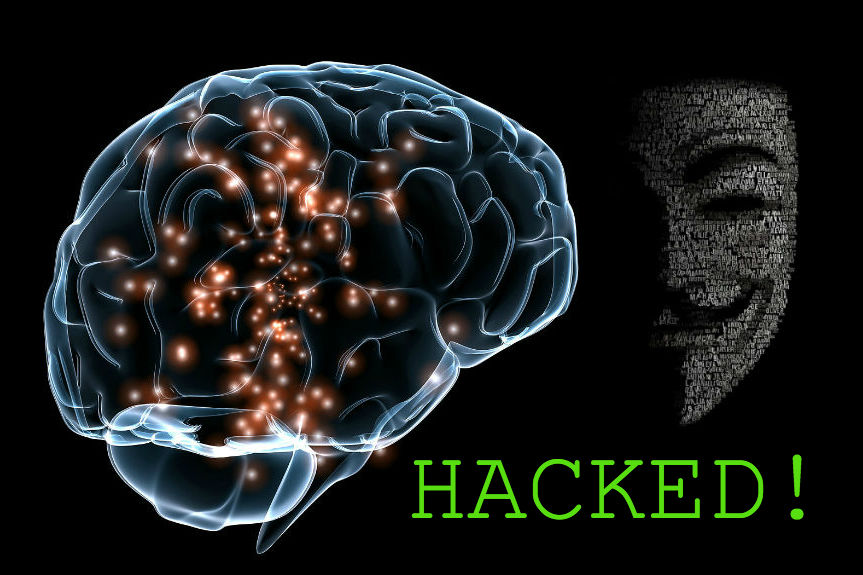Your Computer Brain
You’ve heard about computer hackers, right? These are guys that figure out how to get computers to do things they want (sometimes this is sneaky, but not always). Well, did you know that your brain is a lot like a computer, and habits are like little bits of code that run in your brain? So, like computer hackers, you can learn to “hack your habits.” The key is to understand what habits are and how to make and break them. First, let’s consider how habits get loaded into our brains.
The brain starts out as a mostly empty hard drive with some pre-installed survival software (aka instincts) where no thinking or learning is required. When you are born, you “boot up” for the first time (thankfully no commercial “bloatware” is pre-installed), take your first breath, cry, and begin looking for food. Over time, and based on feedback loops, you start loading more and more software “code” into your system.
Today, everyone is excited about the potentials of Artificial Intelligence (AI). Well, embedded in you is something you should be just as excited about–Genuine Intelligence (GI). You have an amazing device called your brain that begins sucking up patterns and feedback from birth onward. If you cry, you get food. If you drop your spoon on the floor, mommy picks it up (over and over–what a fun game!). If you tell people what they want to hear, you can become a powerful politician (oops, I digress).
So if the brain is like a computer, then habits are like little subroutines that run in the background. These are little bits of code that execute without conscious intervention. While you are busy other things, habits are keeping you on track. Habits are your autopilot. You don’t have to pay attention, because habits are automatic.
Some studies estimate that up to 40 percent of your day could be attributed to habit. Habits get you ready for your day. Habits help you drive. Habits affect the way you do your work. This is a good thing. Think how hard it would be to manage your day if everything you did had to be learned or re-learned on the spot. It would take far more time and energy, and it would be very difficult to make any progress because you would be so busy just doing basic things.
Habit Malware
However, habits also have a darker side. Remember the poem I introduced on the “Start Here” page?
You may run me for profit, or run me for ruin; it makes no difference to me.
Take me, train me, be firm with me and I will put the world at your feet.
Be easy with me, and I will destroy you.
Habits, these little bits of psychological code, can be programmed to do anything. Sometimes these are positive (like brushing your teeth), sometime negative (like hitting snooze five times before you get up).
Some negative habits are like little computer viruses/malware that trigger bits of code that we don’t want to run, and that actually threaten to co-opt and even destroy our system. We call these addictions: overeating, drug and alcohol abuse, pornography, gambling, shopping, video games, obsessive social media use, to name a few.
Hack Your Habits
So, why not figure out how to create your own mental and behavioral subroutines? Instead of letting your “GI” (Genuine Intelligence) passively learn whatever comes along, why not actively engineer your own little habit programs? Well, it turns out you can. Research has shown that habits are indeed programmable.
A habit consists of three components: (1) trigger, (2) routine, and (3) reward. This is called the habit loop. If you have done any computer programming, you probably noticed some strong similarities.
Computer programmers are familiar with IF/THEN statements. For example, IF a user clicks a button, THEN launch the application. Habits are essentially the same thing–they are small IF/THEN statements for our brains. Here is how that might look in code for the computer nerds out there:
<Habit>
IF [trigger] THEN [routine] + [reward]
</Habit>
“Loop” this code snippet 60-80 times (21 days is a myth), and voilà! You have a shiny new habit.
Identify the Trigger
Triggers can be events or feelings. These are regular patterns our brains have recognized and categorized. To keep things manageable, the brain says, “Oh, I’ve seen this scenario before. I’ll just handle what comes next. You don’t need to spend precious conscious CPU time on this. Just leave it to me.” These are things we’ve practiced over and over, so the actions that follow are automatic. Here are some typical triggers:
Feeling-based triggers:
- Bored
- Hungry
- Fearful
- Anxious
- Rushed
- Burned-out
Event-based triggers:
- Alarm clock rings
- Walk into kitchen
- Back car out of driveway
- Sit down at desk
- Log into computer
- Lunch hour arrives
- Waiting for something to begin/end
- Arrive home
- Dinner ends
Create the Routine
The “routine” is the behavior or thought process that follows the trigger. The feeling-triggered routines are the most complex to understand and change. It’s probably because feelings often go unrecognized, so the routines and behaviors that follow are also subconscious. It’s like there is a short-circuit that bypasses the thinking brain.
The result is that without careful attention, there is very little distance between stimulus (trigger) and response (routine). Remember your grandmother’s advice that when you are angry you should “count to ten” before you respond? This is an attempt to insert some daylight between the trigger and response.
Event-triggered routines are a bit more straightforward and should not require laying on a couch discussing your relationship with your mother. Because these are events that occur nearly every day, you can plan your responses and then practice them until they become automatic.
Reinforce with the Reward
If you associate an action with pleasure (reward), you will want to do it again. If you associate an action with pain (punishment), you will avoid it. While this maybe over simplified somewhat, it is remarkably true. We are creatures driven by pleasure and pain.
In Habits of a Happy Brain, Loretta Breunin, PhD describes how pleasure and pain are triggered. When we do certain actions, chemicals are released in the brain (neurochemicals) that cause a feeling of pleasure or happiness. The four that are most understood are endorphins, dopamine, serotonin and oxytocin. Without getting too specific (more on this later), these “happy neurochemicals” have a significant influence on how we feel. (And here you thought you were choosing how to feel, when in fact, you are a slave to these sneaky little brain drugs.)
The key is to create “feel good” association to reward your routine, and you will be well on your way to hacking your habits.
Additional Resources:
- Duhigg, Charles. The Power of Habit – If you google “habits” you are going to see a lot of references to this book.
- Breuning, Loretta. Habits of a Happy Brain – A really nice summary of how neurotransmitters affect how you feel.
- Lally, Phillipa. How are habits formed: Modelling habit formation in the real world
If you enjoyed this post, please use the share buttons to help other people see it as well. I also appreciate all comments! Enthusiastically agree? Respectfully beg to differ? Have your say here.
Matt Morgan, MD writes about how mastering the first habit is like pushing the power button on your life. Subscribe to his e-mail list (see button on the upper right) and follow him on Twitter and Facebook.



0 Comments